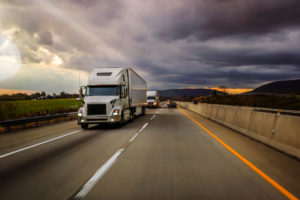By Zachary Shahan, CleanTechnica
The 2010s was the decade of EVs — as far as establishing their arrival and competitiveness. The 2020s is the decade of AVs (autonomous vehicles). This is not guaranteed yet, but it has looked like this would be the case for at least the past 5 years. As much as an autonomous vehicle future sounds exciting, fun, exhilarating even, it also comes with some risk and fear. Bad guys might learn to hack robotaxis — deep tech hacking or crude hacking like a back-alley thief uses after observing patterns of behavior. Some people may find ways to trick or override cameras and then commit crimes of various types in or around robotaxis. So, with all of that in mind, we need “white hat hackers” to look for flaws in the AV systems and work to fix or improve them.
Ohio State University intends to be a center of such research. Unsurprisingly, NVIDIA tech will be used in the program, and this news comes to us through NVIDIA. “Autonomous vehicles require extensive development and testing for safe widespread deployment,” NVIDIA shares. “A team at The Ohio State Center for Automotive Research (CAR) is building a Mobility Cyber Range (MCR) — a dedicated platform for cybersecurity testing — in a self-driving car. Researchers and students will rigorously test the platform to identify potential safety and security issues as well as use it to educate a new generation of AV developers.”
Apparently taking some cues from Waymo, the program is using Chrysler Pacifica minivans. These are strolling the streets with level 4 autonomous driving capability via the NVIDIA DRIVE AGX Pegasus AI compute platform. The program, dubbed “CyberCAR” (which is seemingly trying to rope Tesla into the fun as well), “will initially focus on establishing standards and recommendations for best practices in AV safety and cybersecurity.” Though, it’s also doing useful work outside of the research. The autonomous minivans have already been used to “transport organs for emergency transplant surgeries.” Students are also learning AI compute tech through CyberCAR (through the CyberCARs?).
“We are aiming to generate a workforce that understands these safety and security challenges, as well as one that is familiar with the DRIVE platform and equipped with the right AV skill set for success,” said Qadeer Ahmed, associate professor of research at the Departments of Mechanical and Aerospace Engineering, and Electrical and Computer Engineering, and associate fellow of CAR.
“Ahmed said the team plans to learn as much as they can from building the autonomous vehicle itself, then research the safety and security of individual modules, such as perception, planning and actuation.
“This work will be used to inform industry best practices and standards to help ensure the successful widespread deployment of autonomous vehicle technology.”
NVIDIA is clearly a global leader in compute hardware, and increasingly in autonomous driving hardware and software. Even Tesla uses NVIDIA hardware in the Dojo supercomputer it is building. Earlier this year, I spoke with NVIDIA’s automotive lead, Danny Shapiro, about the various auto companies it has been partnering with, the variety of depth in its partnerships, and what’s next in the autonomous driving industry. If you missed that, check it out here.

